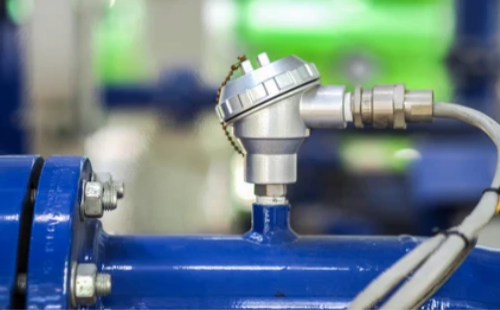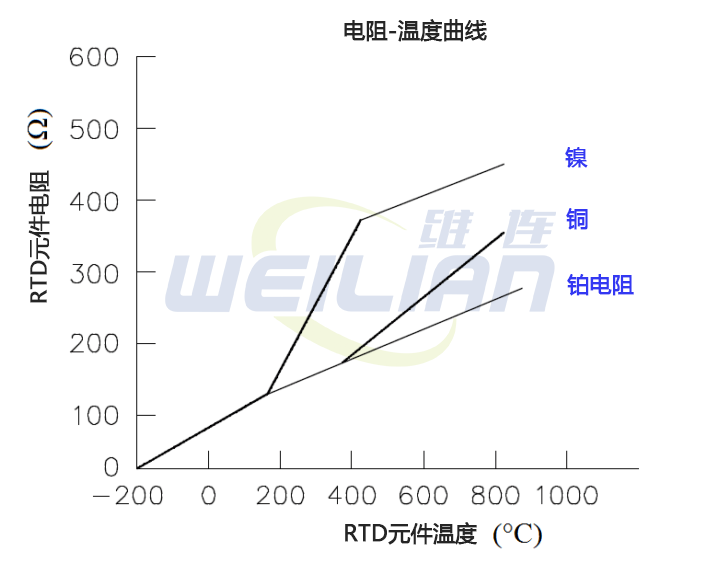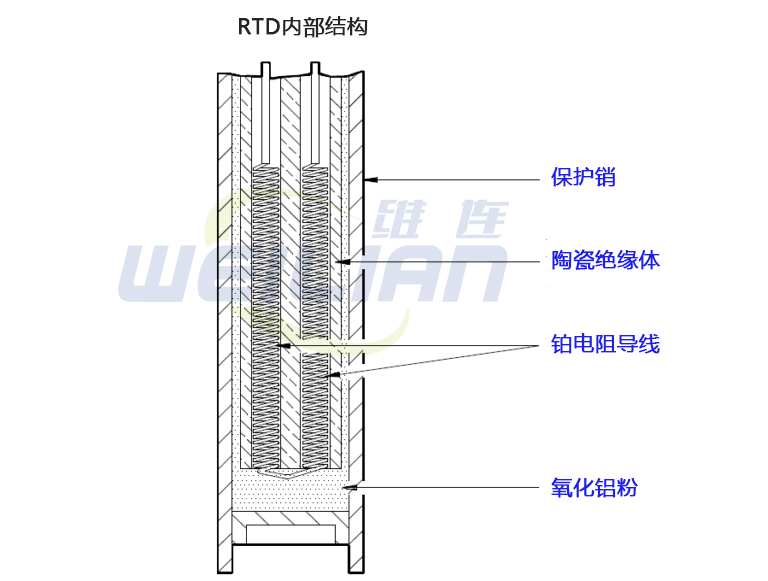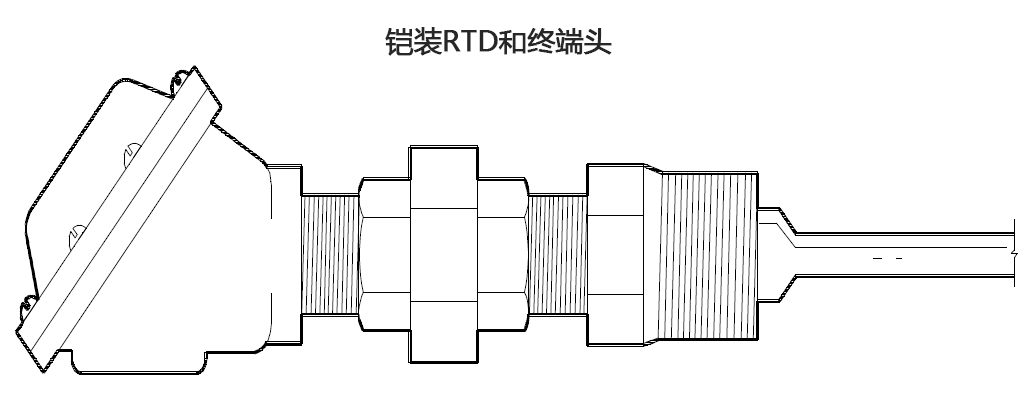
 Structure of resistance temperature sensor (RTD temperature sensor)
Structure of resistance temperature sensor (RTD temperature sensor)
RTDs contain pure metals or some alloys, whose resistance increases with increasing temperature, on the contrary, it decreases with decreasing temperature. The function of RTD temperature sensor is somewhat like an electrical converter, which converts temperature changes into voltage signals by measuring resistance. The metal most suitable for use as an RTD temperature sensor is pure, consistent in quality, stable within a given temperature range, and capable of providing repeatable resistance temperature readings. Only a few metals have the characteristics required for use in RTD temperature sensor elements.
RTD temperature sensor elements usually consist of platinum, copper, or nickel. These metals are best suited for RTD temperature sensor applications because of their linear resistance temperature characteristics (as shown in Figure 1), high resistance coefficients, and the ability to withstand repeated temperature cycles.

Fig. 1 Resistance temperature curve
The coefficient of resistance is the temperature change per degree change in resistance, usually expressed as a percentage per degree Celsius. The material used must be able to be pulled into thin lines so that components can be easily constructed.
RTD components are usually long spring wires enclosed by insulators and enclosed in a metal sheath. Figure 2 shows the internal structure of the RTD.

Fig. 2 Internal structure of typical RTD
This special design has a platinum element surrounded by a porcelain insulator. The insulator prevents short circuits between the wire and the metal sheath.
Inconel is a nickel iron chromium alloy. Due to its inherent corrosion resistance, it is usually used to manufacture the sheath of RTD temperature sensors. When placed in a liquid or gas medium, the Inconel sheath quickly reaches the medium temperature. Temperature changes can cause the platinum wire to heat or cool, resulting in a proportional change in resistance.
This change in resistance is then measured by a precision resistance measuring device that is calibrated to provide the correct temperature reading. The device is usually a bridge circuit.
Figure 3 shows an RTD protection well and terminal blocks. The well protects the RTD temperature sensor from damage by the gas or liquid being measured. The protection wells are usually made of stainless steel, carbon steel, Inconel or cast iron, and their service temperatures are up to 1100 ° C.

Figure 3 Armored RTD and Terminal
to make a long story short
Resistance temperature detectors (RTDs) are summarized below.
1. RTD resistance changes directly with temperature:
☻ As the temperature rises, the resistance increases.
☻ As the temperature decreases, the resistance decreases.
2. RTD is composed of thin, pure, metal and spring shaped conductors, which are surrounded by insulators and encapsulated in a metal sheath.
3. The temperature change will cause the RTD temperature sensor to be heated or cooled, resulting in a proportional resistance change. Changes in resistance are measured by precision equipment that is calibrated to provide correct temperature readings.

